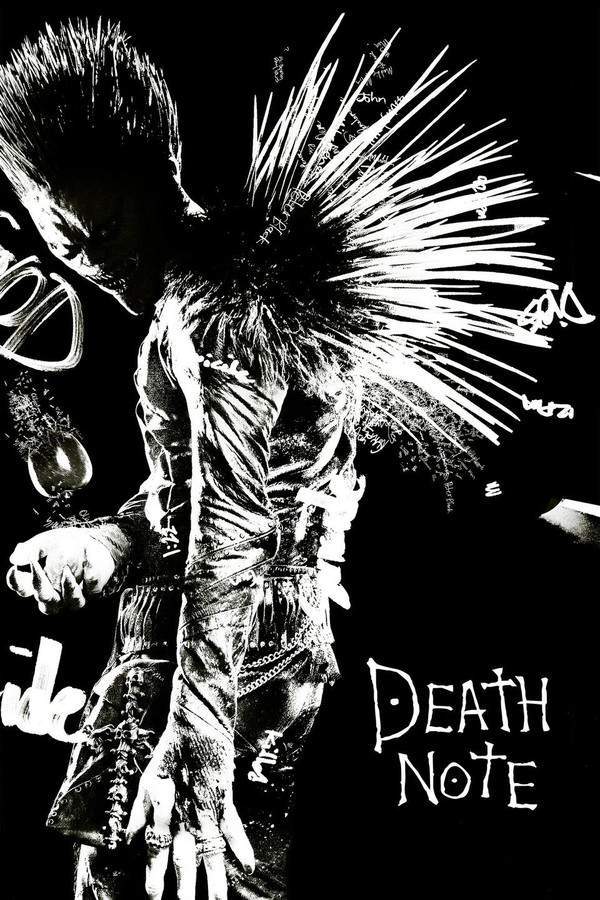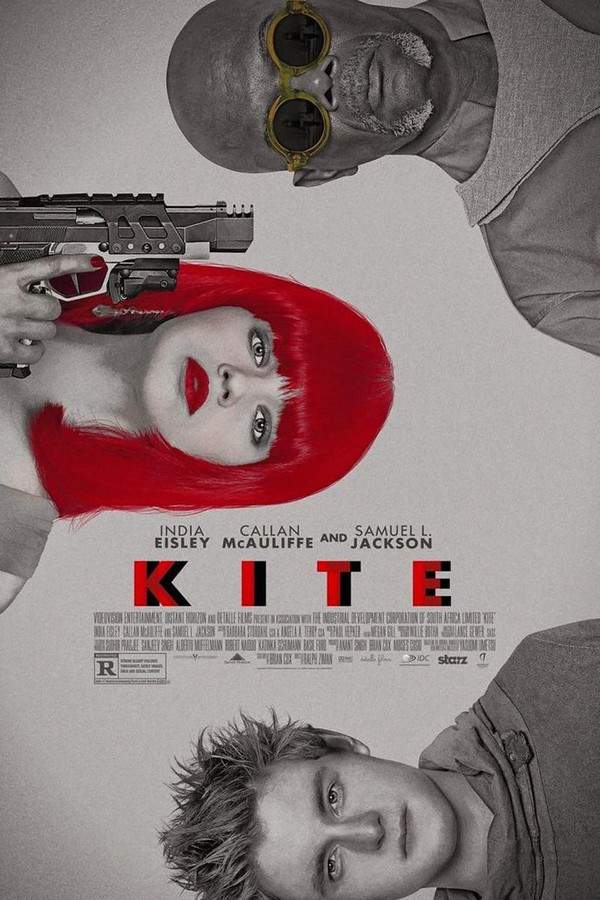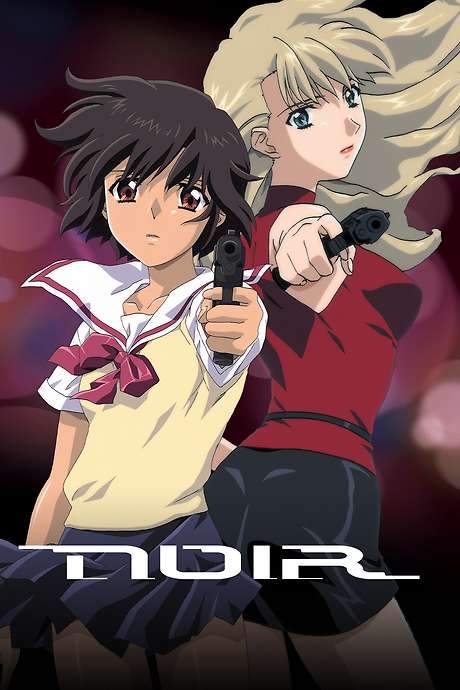
Death Note
A brilliant high school student discovers a mysterious notebook that grants him the power to kill anyone whose name is written within it. Driven by a desire to create a world free of crime, he begins using the notebook, but as he does, he finds himself increasingly consumed by his actions and pursued by a dedicated detective determined to stop him. The ensuing cat-and-mouse game tests the boundaries of justice and morality.
Warning: spoilers below!
Haven’t seen Death Note yet? This summary contains major spoilers. Bookmark the page, watch the movie, and come back for the full breakdown. If you're ready, scroll on and relive the story!
Death Note (2017) – Full Plot Summary & Ending Explained
Read the complete plot breakdown of Death Note (2017), including all key story events, major twists, and the ending explained in detail. Discover what really happened—and what it all means.
In the neon-drenched streets of Tokyo, a discontented high school student named Light Yagami chances upon a mysterious black notebook, known as the Death Note. This cryptic book possesses a sinister set of rules that grants its wielder the chilling ability to end a person’s life in mere moments—provided they know the individual’s true name and face. Embarking on his dark quest, Light utilizes the notebook to eliminate notorious criminals but soon finds himself face to face with Ryuk, a shinigami, or spirit of death, who previously owned the Death Note. Ryuk, invisible to those who haven’t touched the notebook, admits he dropped it into the human realm out of sheer boredom and now delights in observing Light’s choices.
As the unexpected wave of mysterious killings captures the attention of global media, the nameless killer becomes known as “Kira,” a title that sends chills through Interpol agents. In reaction to this escalating threat, the brilliant yet enigmatic detective L is called upon to aid in the investigation. Displaying his exceptional forensic skills, L cunningly lures Light into revealing his whereabouts through a carefully laid decoy scenario. As Light’s eyes narrow at L’s interference, he vows to dispose of this pesky detective. Meanwhile, L swiftly concludes that Kira must have insider information regarding the Japanese police investigation that is spearheaded by Light’s own father, Soichiro Yagami. Boldly, L assigns an FBI team to surveil individuals connected to the case and identifies Light as his prime suspect. Transitioning from his high school graduation to college life, Light is brought onto the Kira Task Force, his role laced with irony and deceit.
In a spectacular twist, model-turned-actress Misa Amane stumbles upon a second Death Note from another shinigami named Rem. In exchange for trade, she receives the coveted “shinigami eyes,” enabling her to see the real names of those whose faces she observes. The price, however, is steep: Misa’s remaining lifespan dwindles with each use. Driven by love for Light, Misa unveils his identity as Kira, unwittingly entangling herself in a dangerous game of cat and mouse with L. Light, ever the manipulator, plots to utilize Misa’s abilities to find L’s true name. However, L captures Misa, leading to a harrowing exchange where Rem warns Light that failure to save her will seal his own fate.
Desperate to avoid disaster, Light engineers a plan to erase both Misa’s and his own memories of the Death Note, ultimately transferring it to Kyosuke Higuchi, a member of the Yotsuba Group. As his recollection fades, Light reintegrates himself into the investigation, collaborating with L to decipher the enigma surrounding Higuchi, which ends in his arrest. Once his memories return, Light reclaims the power of the Death Note and eliminates Higuchi, setting Misa back in her role as Kira, which further fuels L’s suspicions of her. The situation escalates when Rem, sensing Light’s intent to sacrifice Misa, intervenes fatally against L, leaving Light with her Death Note in hand. The Task Force reluctantly acknowledges Light as their new leader in the wake of L’s demise.
Fast forward four years, and a rising number of cults idolizing Kira emerge in society. New contenders have entered the stage, namely Near and Mello, who are vying to fill the shoes left by L. Mello strikes a risky partnership with organized crime, while Near collaborates with the U.S. government. When Mello kidnaps Director Takimura, Light intervenes lethally. In a subsequent endeavor, Mello captures Light’s sister, bartering her for the Death Note, which he uses to decimate nearly all of Near’s team. Meanwhile, an unexpected alliance forms on Earth as Sidoh, a shinigami bound to reclaim his notebook, teams up with Mello. In the chaos, Light experiences profound loss, losing his father amidst the turmoil.
Further layers unfold as Light’s authority is threatened—shifts in alliances quicken and trust wavers within the Kira Task Force. With Misa under scrutiny, Light cleverly transfers the Death Note responsibilities to Teru Mikami, an ardent follower of Kira, while appointing news anchor Kiyomi Takada as Kira’s prophetic voice. The tension peaks when Near suspects treachery as Mikami operates under surveillance, prompting violent confrontations. As Light orchestrates a desperate ploy to dispatch Near and his circle, a crucial mistake is made: Mikami writes on a decoy notebook.
With Near deciphering the truth, Light realizes his folly just as he is gravely wounded. The ever-watchful Ryuk finalizes the ominous cycle by inscribing Light’s name in his own Death Note, culminating an agreement made in their first encounter. As Light breathes his last, the world he sought to reshape teeters on the brink of chaos, the fate of Kira hanging in the balance. The aftermath finds the Kira Task Force bearing heavy burdens of morality and consequence.
Three years post-Light’s climax, Near, now the new L, faces an upstart Kira with their own erratic agenda. Mistaking this impersonator for a mere distraction, Near brushes aside their relevance—a dull player in shadows of brilliance. Meanwhile, Ryuk embarks on a wager with another shinigami, Midora, speculating on whether a human can rise to Kira’s unprecedented legacy once again. As fate unfolds, the newcomer boldly embraces the Death Note, spurred on by Near’s dismissive remarks about the previous Kira.
A decade later, Ryuk returns to the human realm, gifting the Death Note to the most intelligent student, Minoru Tanaka, hopeful he might walk in Light’s fateful footsteps. However, the encounter takes an unexpected turn when Minoru astounds Ryuk—not just accepting the Death Note, but also vowing to return it intact in two years. The journey leads to an audacious plan where Minoru, driven by insatiable ambition, intends to drain the Death Note’s potential, putting it on auction to global leaders, bending its might to his financial gain.
With tension stirring, Near dedicates his efforts to crafting advanced technology, aiming to uncover and defeat the remaining shinigami. Yet, as Minoru’s plot thickens, Ryuk intervenes, distracting a U.S. President, who unwittingly misuses the Death Note. As veils of fate intertwine, Minoru’s chance walk brings clarity of consequence, leaving both realms forever impacted by the legacy of Kira. All the while, Ryuk pens his own name near Light’s, seeking an unquenchable thirst for the pandemonium artfully crafted by humankind’s intricate dance with power.
Last Updated: November 21, 2024 at 10:40
Ending Explained – What Happens at the End of Death Note?
Still wondering what the ending of Death Note (2017) really means? Here’s a spoiler-heavy breakdown of the final scene, major twists, and the deeper themes that shape the film’s conclusion.
The ending of Death Note is both tragic and symbolic, reflecting on Light Yagami’s complex character. Throughout the series, Light’s pride and belief in his godlike mission drive him to commit horrific crimes, convincing himself he is justified in his actions. When he is finally cornered by Near and the Task Force, Light’s attempts to cling to power grow desperate. In the anime, he refuses to surrender, even trying to kill Near with the Death Note one last time, still convinced of his righteousness. Despite his arrogance, he is ultimately shot multiple times by the police, and it is Ryuk—the shinigami—who decides to end Light’s suffering by writing his name in his own Death Note. Light’s death in the anime portrays him lying alone on a staircase, a visual symbol that his soul is caught in limbo, neither able to find peace nor face punishment.
In contrast, the manga’s ending shows a more vulnerable Light. As he is grasped and betrayed, he begs Ryuk to save him—pleading for mercy as his pride crumbles. Ryuk declines, writing Light’s name in the Death Note, which leaves Light broken and hopeless. This final moment reveals a stark contrast to his earlier confidence, exposing his inner weakness and desperation. The manga’s conclusion feels almost pitiful, emphasizing the tragic fall of a young man who believed himself above morality but ultimately faced the consequences of his actions.
Both endings highlight the tragic downfall of Light, but while the anime emphasizes his stubborn ego and prideful defiance in death, the manga underscores his utter despair and loss of dignity. The series’s conclusion is filled with powerful symbolism—the fractured images of Light, the limbo-like stairway, and the moral implications of his fate—making it a somber reflection on justice, pride, and the consequences of playing god. Ultimately, Light’s death signifies that his hubris was his undoing, leaving viewers with a poignant reminder of how unchecked ambition and arrogance can lead to downfall.
Last Updated: June 25, 2025 at 09:00
Unlock the Full Story of Death Note
Don't stop at just watching — explore Death Note in full detail. From the complete plot summary and scene-by-scene timeline to character breakdowns, thematic analysis, and a deep dive into the ending — every page helps you truly understand what Death Note is all about. Plus, discover what's next after the movie.
Death Note Timeline
Track the full timeline of Death Note with every major event arranged chronologically. Perfect for decoding non-linear storytelling, flashbacks, or parallel narratives with a clear scene-by-scene breakdown.

Characters, Settings & Themes in Death Note
Discover the characters, locations, and core themes that shape Death Note. Get insights into symbolic elements, setting significance, and deeper narrative meaning — ideal for thematic analysis and movie breakdowns.

Death Note Ending Explained
What really happened at the end of Death Note? This detailed ending explained page breaks down final scenes, hidden clues, and alternate interpretations with expert analysis and viewer theories.

Similar Movies to Death Note
Discover movies like Death Note that share similar genres, themes, and storytelling elements. Whether you’re drawn to the atmosphere, character arcs, or plot structure, these curated recommendations will help you explore more films you’ll love.
Explore More About Movie Death Note
Death Note (2017) Scene-by-Scene Movie Timeline
Death Note (2017) Movie Characters, Themes & Settings
Death Note (2017) Ending Explained & Theories
Death Note (2017) Spoiler-Free Summary & Key Flow
Movies Like Death Note – Similar Titles You’ll Enjoy
Death Note (2006) Story Summary & Characters
Death Note (1000) Ending Explained & Film Insights
Death Note: The Last Name (2006) Detailed Story Recap
Death Note: L Change the WorLd (2008) Spoiler-Packed Plot Recap
Death Note Relight 1: Visions of a God (2007) Full Movie Breakdown
Death Note Relight 2: L’s Successors (2008) Plot Summary & Ending Explained
Bleach (2018) Movie Recap & Themes
Kite (2014) Full Summary & Key Details
Death Wish (2018) Film Overview & Timeline
Noir (1000) Complete Plot Breakdown
Death’s Game (1000) Movie Recap & Themes
Bakuman (2015) Complete Plot Breakdown
Death Kiss (2018) Detailed Story Recap
Ghost in the Shell (2017) Complete Plot Breakdown
Tokyo Revengers (2021) Movie Recap & Themes

















